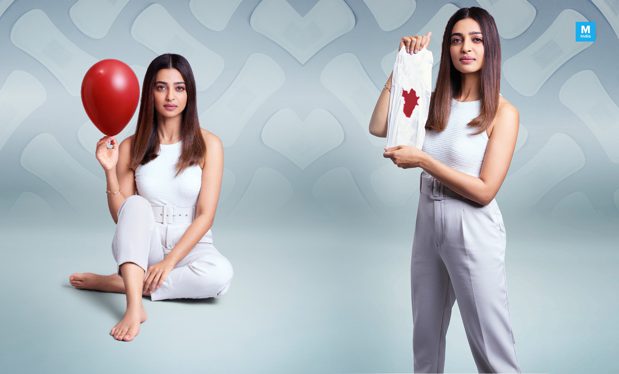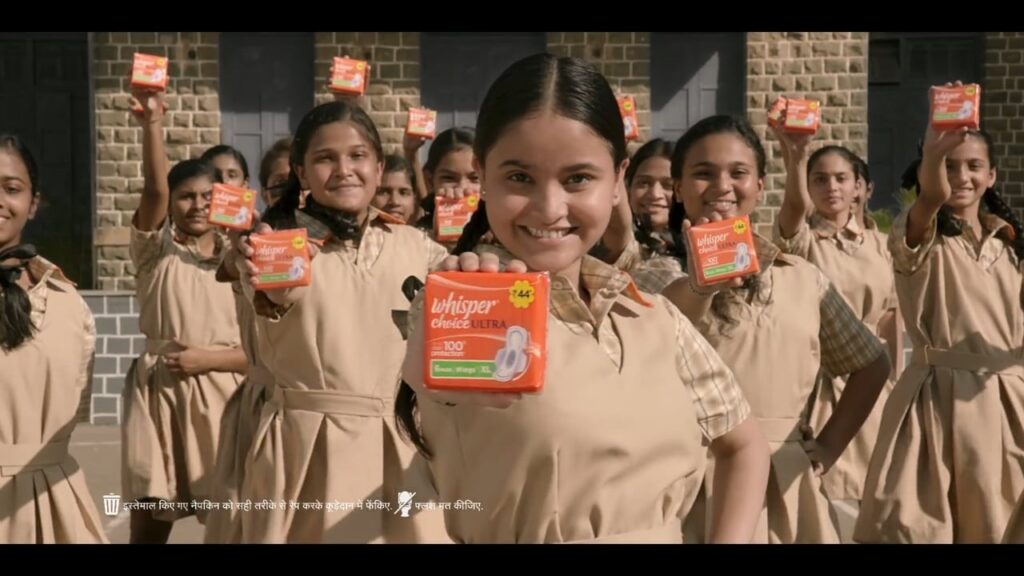Sanitary Product Advertisements: Got It All Messed Up?
Advertisements are strong tools not only for business purposes and the sale of products but also for awareness. Menstruation has been a closeted topic for ages and hence you see the advertisements of menstrual products as somewhat ‘weird’. To be blunt, sanitary product advertisements are very often misleading, sexist, irrelevant, and insufficient. The awareness strategy has been discarded now; the sole purpose of ads has become brand popularity and sale of the same. The effect of the shift in strategy is proving to be a hiccup for the people who bleed. Here’s how ads are becoming problematic.

An intimate “feminine” problem
It’s factually wrong to consider menstruation (i) feminine and (ii) a feminine “problem”. Not all females bleed and not all people who bleed are womxn. Moreover, trans-men and non-binary people menstruate as well. You never see the involvement of trans-men in the sanitary product advertisements — they are directed towards a certain group, excluding other menstruators. Nevertheless, the language used hints that menstruation is a problem. Terms like “un dino” or “mushkil din” are used in place of simple words such as period days. It seems like adding a pity factor. Sure period days can be rough but it isn’t a biological problem to be regarded with such terms.

Not everyone’s jumpy on period, I am grumpy
Experiences differ. A lot. Usually, television sanitary product advertisements show womxn getting bouts of energy, playing sports, partying, working and all truly empowering things. They aim towards helping a womxn hide stains or secure leakage so that they can work without having to fear getting their clothes spotted and smeared. What a menstruator would like to see in ads is that not everyone goes through the same feeling.
“When people see misleading ads they are more likely to interpret their condition in a negative way. A first-year menstruator is perhaps the worst hit when periods are nothing like you see on TV.”
As for me, I would rather be a couch potato, hold onto a heating pad, and binge Netflix the entire day. The more relatable the content, the more the people will understand the reality. When people see misleading ads they are more likely to interpret their condition in a negative way. Where do all those cramps, sudden acne, bloating, mood swings go when it comes to representing periods on TV? A first-year menstruator is perhaps the worst hit when periods are nothing like you see on TV.

Truth be latent
Insecurities build up faster than they break. The all-white concept, the fragrant concept, and the conscious concept contribute towards insecurities. The color tone of ads is mostly white (signifying purity) and this contrasts with the color of blood, red. For years period blood is considered impure and such color tones deliver the message that red is unholy, periods are unholy, and white is serenity.
In some sanitary product advertisements, you see womxn worried about the smell. They promote the product by highlighting its fragrant qualities. This adds up to the dilemma, but just like all vaginas smell to a degree, it is okay for blood to smell too. The fragrant property should be seen for comfort purposes, not for covering up a natural phenomenon. Some instances also show a mother just psychically knowing her daughter is on her period and needs the product; the word period is never even used. You never get to see the real conversation, just shyness, more hiding, and consciousness. This actually hampers a conversation that could have taken place, made things clearer for a young menstruator.

Wait, blood is blue?
A pad is not a diaper. Using blue gel is irrelevant. I took opinions from people who do not bleed if they knew what the ads meant. And just like I had assumed, I received an experience saying “for a long time it wasn’t clear what was happening, what even was the blue liquid until I googled what periods are.” Apparently, it’s disgusting to show the real color of period blood while in crime, horror, medical, and even in sitcoms blood in its authentic color is shown. I would rather find the blood of a murder victim on TV gruesome than the blood that is naturally flowing out.

Unsustainability
Stats say there are 121 million womxn and girls using sanitary pads, but pads aren’t the only products available in the market. I never knew that there was something known as tampons and menstrual cups until I joined Instagram, saw a few posts about them. Unfortunately, the advertisements of these products never made it to the television. It is noteworthy that products apart from sanitary napkins are more sustainable and generate less waste. Unfortunately, these products can’t be easily accessed in rural areas. They aren’t even easy to find in urban centers. Since these articles are to be inserted inside the vagina, taboos are associated with it. A common myth that revolves around the use of tampons and menstrual cups is that of virginity.
Some companies have understood the need for change and the need for inclusivity in advertisements. These are truly contributing towards a broader perspective. One Indian example being Pee Safe’s Raho Safe. It includes men in the conversation about periods. The internet went wild for all the good reasons when Cha Eun Woo became the face for sanitary products in South Korea.
As I approach the end, it is evident not everything we see is in its finest form of veracity. There’s more to the story of periods and period products.
Graphic design by: Anshika Maria Sunny
Author


2 thoughts on “Sanitary Product Advertisements: Got It All Messed Up?”
Good Job Maanya.. Keep writing..
Good job Maanya.. Well written